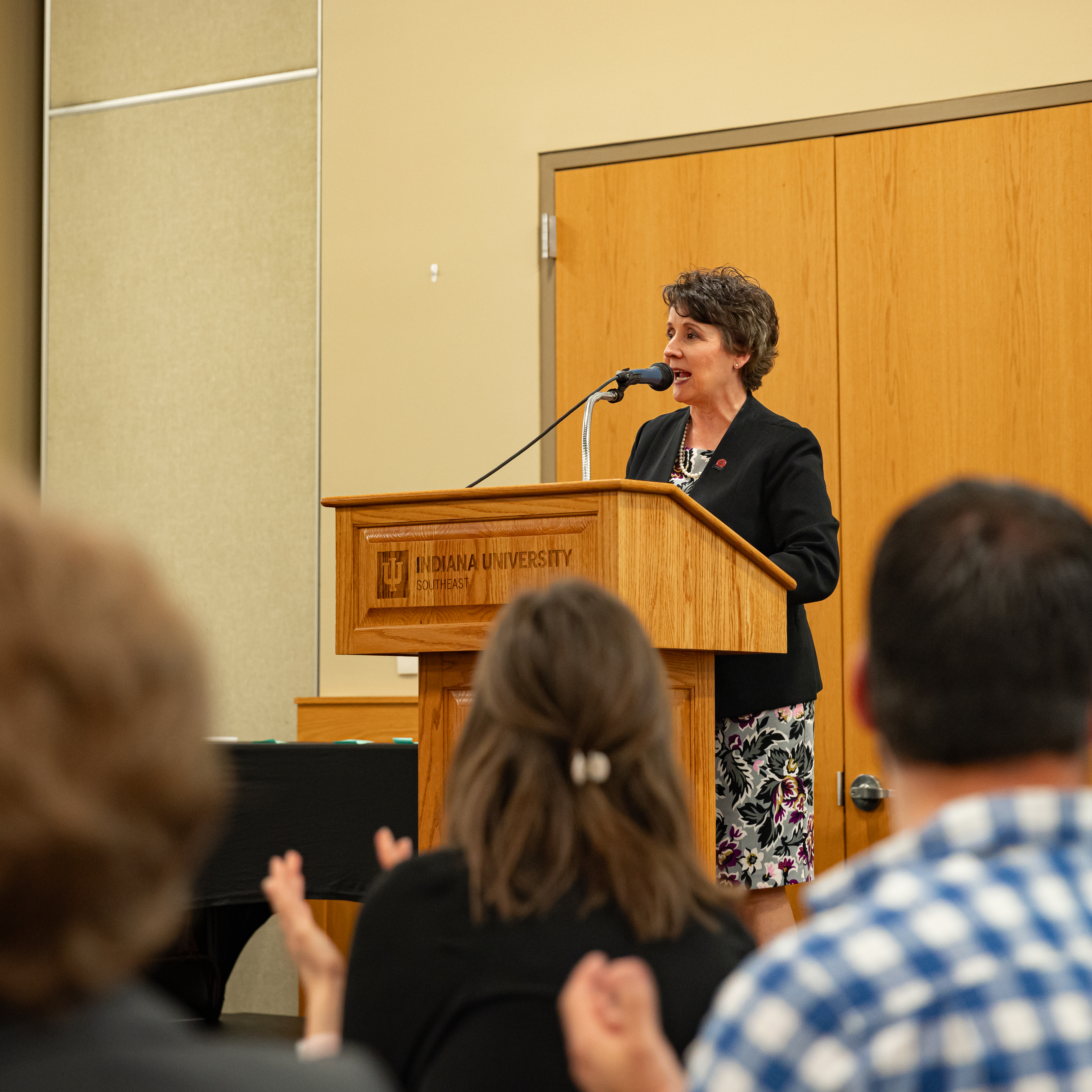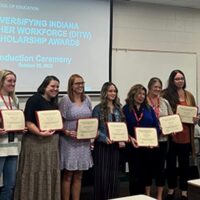Academic Program
The program assessment procedure at IU Southeast is an annual, data-based process for improving student learning at the program level. Every academic program is required to implement this process. Based upon current levels of assessment processes, program assessment efforts are scored using a rubric and placed into one of three assessment cycles:
- Triennial Programs have well-established assessment systems and are seen as exemplary models for the campus. The purpose of the triennial assessment is to monitor progress, offer guidance as needed, and suggest advanced ways in which programs can tighten and improve an established assessment program. Scores range from 22-28. They are required to submit full assessment reports every 3 years, and brief updates to their assessment plans every off year.
- Biennial Programs are transitioning from developing to established assessment systems. These programs are generally assessing student learning well, but fall short in a number of best practice areas. Additional guidance from OIE is seen as necessary to better establish solid assessment practices. Scores range from 18-21. They are required to submit full assessment reports every 2 years, and brief updates to their assessment plans in the off year.
- Annual Programs are continuing to develop their assessment plans, but significant gaps remain. OIE recommends that these programs meet with the Assessment Coordinator at least once per semester to identify areas of improvement and to provide guidance in how to improve their assessment and reach biennial or triennial status. Scores range from 0-17. They are required to submit full assessment reports every year. These are the programs who we request schedule a meeting with OIE to discuss how to improve their assessment to obtain longer cycles.
One primary goal of the OIE assessment team is to work with faculty of all programs, especially those with annual or biennial assessment cycles, to improve programmatic assessment and facilitate each program to achieve triennial cycle status. As of Spring 2019:
- 20 programs (56%) are on the triennial cycle
- 5 programs (14%) are on the biennial cycle
- 11 programs (31%) are on the annual cycle
OIE maintains Program Assessment Plans on file for each of our 34 programs. These plans form the core of communicating what the program is examining with regards to student learning. It is imperative that programs update this grid or communicate changes to the grid to OIE as modifications occur, specifically in their yearly assessment reports or updates. The program assessment plans document and/or define:
- Student learning goals: Student learning goals form the bridge between the abstract language of the program’s mission and the concrete student learning objectives that form the backbone of the program’s assessment. As such, these goals should balance broad statements of graduate expectations with discipline-specific knowledge, skills and abilities.
- Student learning outcomes: Student learning outcomes (SLOs) are specific, measureable objectives that describe how students can demonstrate mastery of program goals. Because learning outcomes provide the basis for valid and reliable assessment of effective curriculum and instructional strategies, it is imperative that they be well-worded to provide a clear communication of expectations to students and to select those activities that promote learning.
- Measurement tools (and where assessed): The listing of measurement tools and where (in which course/where in the curriculum) they are assessed allows OIE, the Academic Assessment Committee, and the programs to see the data-collection methods that programs have chosen to use to guide their measurement of student learning. These tools vary from:
- direct measures from student performance or product: test-embedded questions, paper-/project-scoring rubrics, pre-/post-tests, portfolios
- indirect measures of perception, attitude or opinions: surveys, grades, placement data
- Success criteria: At what level the program indicates a student has “successfully” met each outcome’s measurement tool. Common starting criteria include:
- 70% of students answer an embedded test question correctly
- 70% of students score ‘good’ or higher on a particular rubric assessing a paper, project, portfolio or presentation
- 70% of students show improvement from the pre- to the post-test
- 70% of students or instructors perceive student work to be ‘good’ or higher on a particular survey
- 70% of students place into graduate school or a discipline-related job within 1 year of graduation
Please see our programmatic assessment resources:
- Examples of successful assessment reporting
See what makes a successful assessment plan, how to report on programmatic assessment, and ways in which programs can improve their assessment plans. - Assessment resources
Here you can find an evolving mix of detailed resources focusing on all aspects of assessment, from writing solid student learning outcomes to curriculum mapping to using e-portfolios, taken from the best practices of assessment. Also find information regarding our services and assessment grants. This section of our webpage also summarizes research including scholarly pieces written about assessment and prose written from various faculty viewpoints of assessment. - Annual program summaries
See the latest program assessment summaries from all submitted reports and updates, written by faculty program coordinators who set their work into the larger context of the program’s student learning goals.













